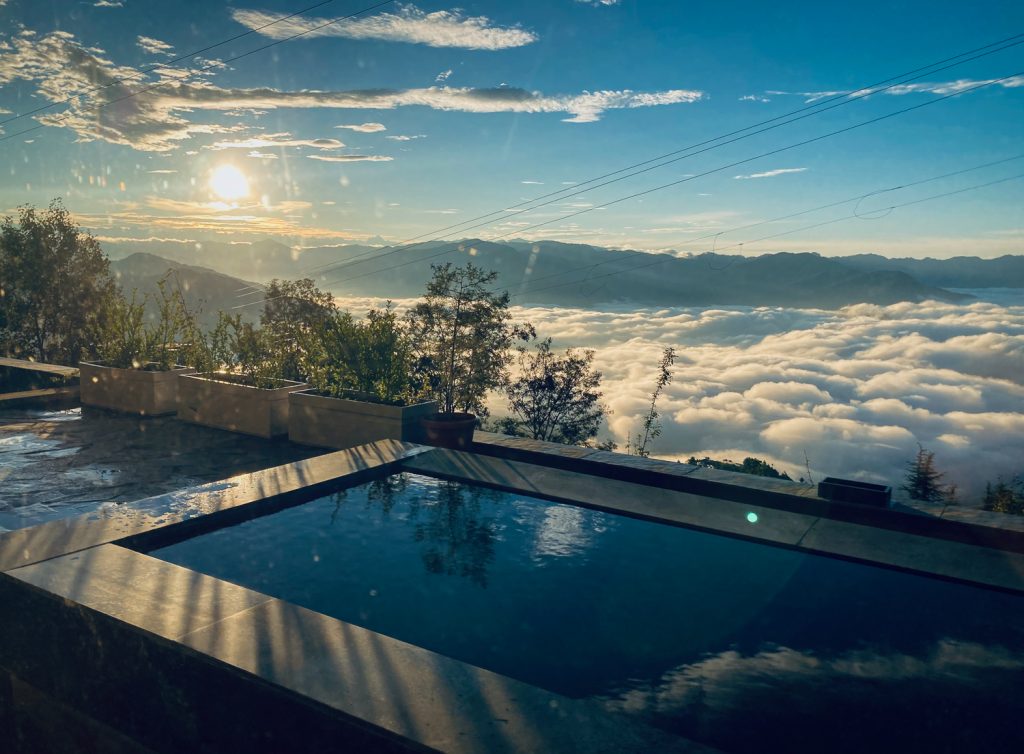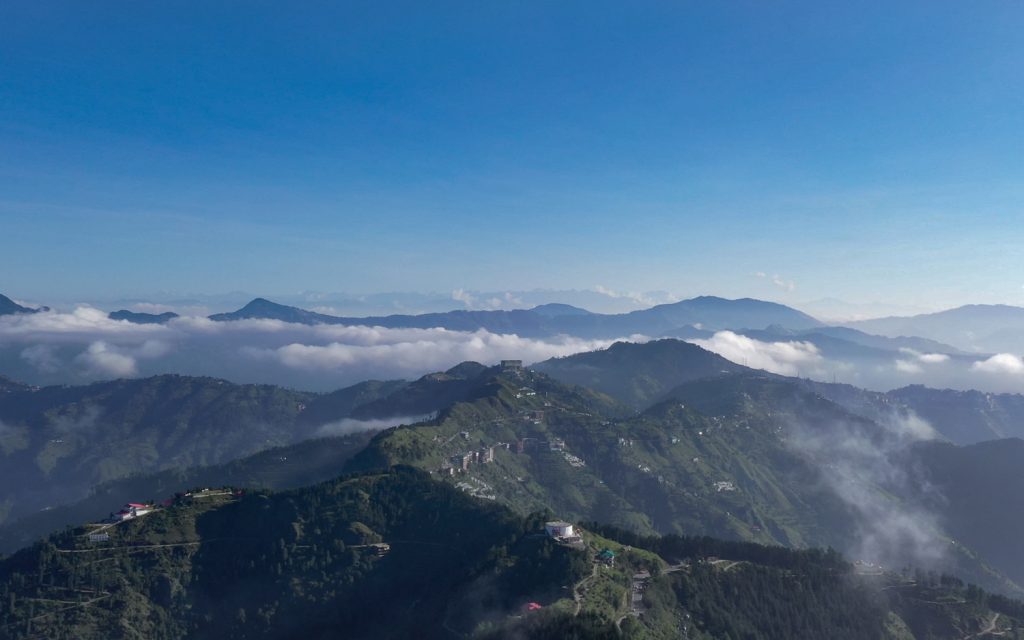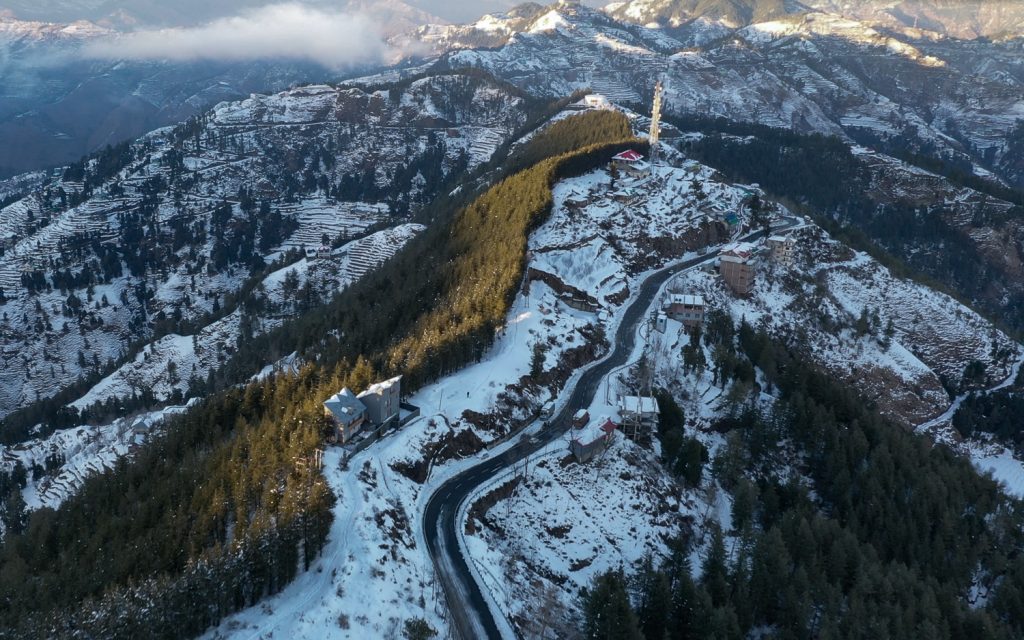
Futuristic luxury in a water-scarce Himachal village
A savvy, innovative villa in Fagu, Shimla, is reimagining aesthetics and utility. In a water scarce region, it is offering practical insights into how a looming water crisis can be tackled.

A savvy, innovative villa in Fagu, Shimla, is reimagining aesthetics and utility. In a water scarce region, it is offering practical insights into how a looming water crisis can be tackled.
The rain gods have been particularly unfair this year, playing either excess or scanty.
As these unpredictable and extreme impacts of climate change are expected to get worse, one futuristic house in the foothills of the Himalayas managed to stay somewhat unscathed thanks to its clever rainwater conservation system.
Built atop a stunning ridge at Fagu, near Shimla, with clouds often hovering below, it is not only beautiful but surreal.

But while the building might have its head above the clouds, the design is rooted firmly in the earth.
This is not the first summer when Fagu and adjoining areas have faced a water shortage. Shimla, the neighbouring town and capital of Himachal Pradesh, has been dealing with a water crisis for seven years in a row, seeing the worst shortage in the summer of 2018.
While the state government’s major mitigation ideas – like making the Sutlej River a major resource base – do promise relief, they are expensive and take time to initiate. It is trying to encourage locals to build buffer storage tanks for drinking water under the Jal Jeevan Mission. But not everyone is keen.

“I have not considered installing a tank yet. It will take investment”, says Rakesh Verma, a local resident, when asked about his plans to recycle rainwater. A large-scale implementation will clearly take more role models and time.
And while the installation of a rainwater harvesting system has been mandatory in urban areas of the state since 2014, it is not required for rural areas like Fagu.
Villa Fagu’s architect saw no other way.
When Gaurav Raj Sharma, founder of the architecture practice Under Mango Tree, was first surveying the spot to build the villa it was raining – a torrential downpour. All he saw was water.
Building a design that conserved that water to be used on dry, parched days seemed obvious.
“Despite abundance, there is scarcity of water in South Asia outside the monsoon months,” said Sharma.
The rainwater harvesting system at the villa can collect, filter and recycle up to 55,000 litres of rainwater in surface pools and an underground tank.
This is a huge benefit for a region catering to a growing number of visitors. But Sharma believes strongly that rainwater harvesting is not just good for the villa and the region in terms of water access, but it also brings resilience to the whole community.

“Rainwater harvesting can positively affect the lives of people who live in the region,” Sharma said.
The rainwater pools also attract a variety of regional animals and birds, adding to the villa’s aesthetics.
But that is not all.
There is an eccentric design feature with geo-political undertones.
Villa Fagu splits the incoming water into two streams with one trickling down on one side of the ridge to the Indus River and on the other merging with a tributary of the Ganges River. This essentially means one stream goes into India and one into Pakistan.
The design also showcases several aspects of the vernacular architecture of Himachal Pradesh.
For instance, in one of the two wings of the house, the central stove in the living area has floor seating around it.
Not surprisingly, Sharma has created a stir with this design, winning the Kyoorius Design Award for Architecture in 2021.
But for many, Villa Fagu’s ability to create a sustainable architecture that employs local craftsmen while also showcasing the traditional roots of the region is a model that should be replicated.
Fusing “ancient wisdom” with modern design is key to Dr Sonali Gupta, an anthropological archaeologist and founder of Himalayan Institute of Cultural and Heritage Studies (HICHS).

When she notices a water stream drying up, she is quick to take note of the parts of architecture, folk narratives, songs and history around that water body that disappear simultaneously.
“The sooner people internalise the urgency of bringing back the ancient wisdom of the Puranas, a paradigm where natural resources were revered, the sooner we shall get to the solutions,” Gupta says.
Confident that ancient wisdom is strongly in sync with the geography and climate of a place, innovation in reviving the indigenous traditions like baoris (stepwells) and chapris (ponds between two crests) is futuristic for Gupta.
There are plenty of doomsday warnings about the impact of climate change in the near future.
Despite rural regions contributing the least to environmental damage, their innovative solutions for various climate related issues are commendable.
“The project (Villa Fagu) shows how water can be used, accessed, managed and also enjoyed,” says Sharma.
Adaptable contemporary solutions and innovation in indigenous knowledge could be the future.
Swati Singh Chauhan is a photographer and film maker based out of New Delhi.
The lead image at the top shows Villa Fagu.